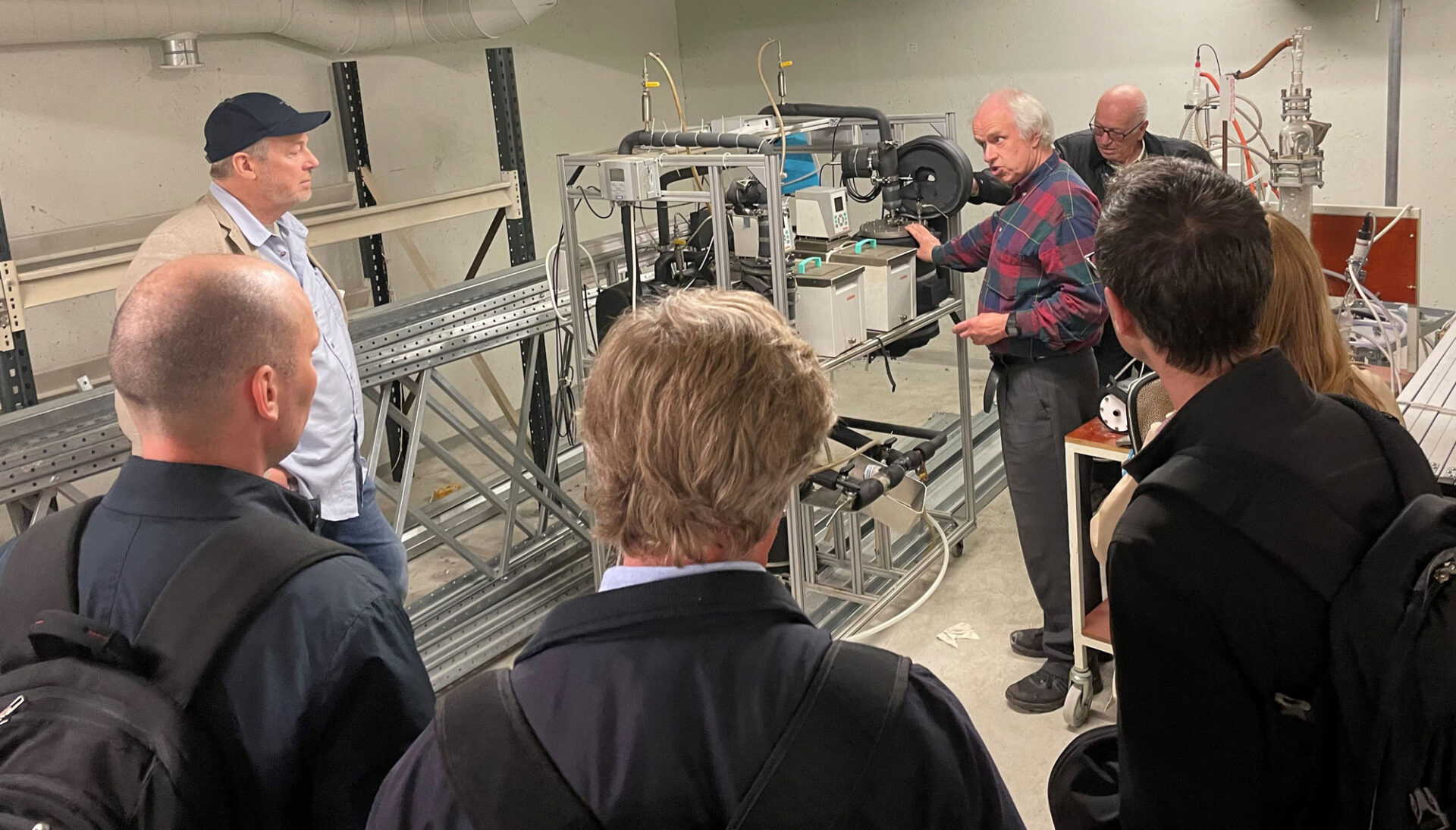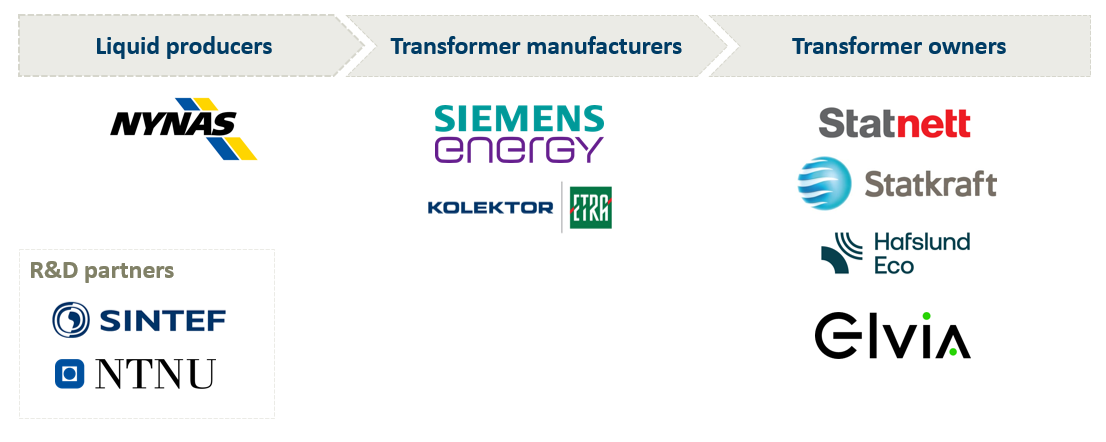In recent decades, several alternative insulation liquids for transformers have become available. Although some of these fluids have advantageous properties, transformer owners are hesitant to adopt them at higher voltage levels.
The reason for their scepticism is that the transformer is part of a critical infrastructure, and that the consequences of failures are significant. The KSP project NewLifT – New liquids for transformer, thermal performance aims to provide further knowledge about the thermal properties of these new liquids, to make it easier for transformer owners to decide when it may be appropriate to use them. The project also aims to make it simpler to determine the pros and cons of using these new insulating fluids.

Transformers as a key component of the power system
The transformer is an essential part of the electric power system and plays a key role in the transmission and production of electrical energy. Excluding smaller transformers located in the distribution network, there are more than 3000 transformers in Norway. The largest of these can cost upwards of 30 MNOK – transformer failures are therefore an expensive matter. In the worst case, transformer failures can also result in catastrophic failures, such as large fires. In other words, there are multiple good reasons to avoid transformer failures. It follows that new technologies must be well-tested before they are implemented.
One component, many considerations
There are many factors to consider when designing a transformer. It must withstand high voltages and high currents without short-circuiting or overheating. To prevent overheating and electrical faults, most large transformers are filled with insulating liquid. The liquid serves both as electric insulation and as a cooling medium. A well-functioning insulating liquid is necessary to prevent failures and accelerated aging of the transformer.
Most liquid-filled transformers are filled with mineral oil, which is a well-tested and technically functional product. The main challenges related to mineral oil are that it is highly flammable, not biodegradable, and not a renewable resource. It is also possible that one can develop technically improved liquids with lower viscosities, which in turn could improve cooling capabilities and slow down ageing processes. In many cases, alternative insulating liquids that are, for example, less flammable, could be a more appropriate choice. Transformers used offshore to connect offshore wind are such a case, as are transformers used in tunnels (related to hydropower), or those installed in densely populated areas. However, the functional requirements for insulating liquids are many, and changing fluids, especially at higher voltage levels, is easier said than done.


First NewLifT project meeting
The NewLifT project aims to assist the industry in transitioning to other insulating fluids when appropriate. Gathering partners from the entire value chain, from fluid producers to end-users, the project was launched in early 2023. In June, we had our first in-person project meeting at SINTEF Energy Lab, in Trondheim.
During the meeting, all partners held presentations and shared their reasons for participating in the project, as well as their hopes and expectations. The current status and experimental rigs were presented, and we set short- and long-term plans for the project.
The goal of NewLifT will be achieved through sub-activities related to various topics:
- Viscosity and cooling properties: The various fluids have different viscosities, which in turn affects their cooling properties. The differences are especially significant at low temperatures. In this project, we will investigate, both numerically and experimentally, how viscosity influences the cooling properties of different fluids.
- Rapid dynamic load and moisture transport: In the transformer, paper separates the insulating fluid from the copper conductors. The paper serves as both insulation and mechanical support. High temperatures over time cause the paper to age and become brittle. Ultimately, the paper will become so brittle that it compromises the mechanical state of the transformer and needs to be discarded. The rate of aging is determined, among other factors, by the paper’s water content. Different fluids have different capacities to absorb and retain water, which influences the water content in the paper both in and out of equilibrium. In this project, we will experimentally investigate how water solubility and dynamics affect the water content in transformer paper.
- Bubble formation and surface tension: If the temperature in the transformer rises rapidly, water can be forced out of the paper insulation and vapour bubbles can form. These bubbles have low electrical strength and can lead to electrical breakdown and catastrophic failures in the transformer. In this project, we will experimentally investigate how water solubility and dynamics affect the water content in transformer paper.
- Breakdown at low temperatures: At low temperatures, the nature of fluids can change, for example by crystallising or “gelling”. Little is known about how this affects the strength of different fluids. In this project, we will conduct experiments to study the strength of various fluids at low temperatures.
Read more on the Project NewLifT webpage.

0 comments on “New insulation liquids for transformers – Asset or liability?”